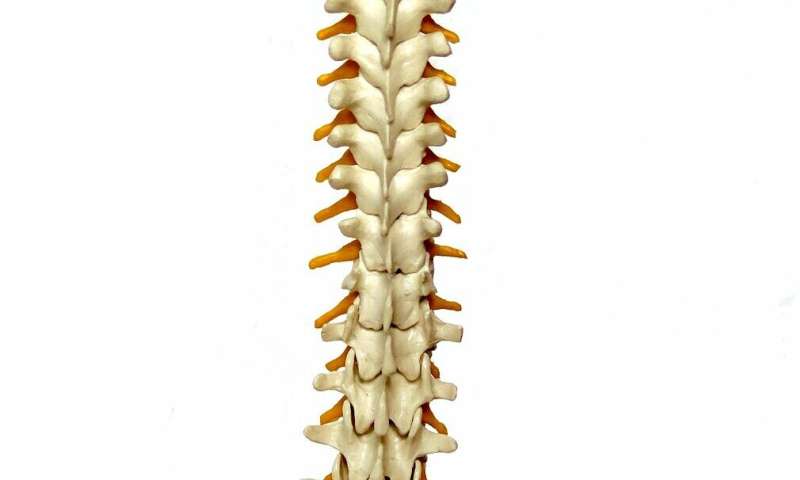
The microscopic structure of bone appears to predict which patients will experience poor outcomes after spinal fusion, according to a new study by researchers at Hospital for Special Surgery (HSS) in New York City.
Spinal fusion is among the most commonly performed orthopedic surgeries in the United States, with more than 400,000 patients undergoing the procedure each year. Although most cases are successful, as many as 45 percent of patients experience complications after the operation, often resulting from the bone’s inability to tolerate the hardware surgeons use to support the skeleton.
The most widely used technology to evaluate patients’ bones before spine fusion surgery is called dual X-ray absorptiometry, or DXA. DXA imaging gives physicians a rough sense of the strength of a person’s bone, but it is not foolproof. In some cases, surgeons find that patients whose DXA scans appear normal have bones that are so weak that the appliances they use during spinal fusion are at risk of failure.
The HSS researchers hypothesized that a more sensitive measure of bone quality could identify abnormalities in the skeleton that DXA does not detect, and that these defects would be linked to postoperative complications.
For the new study, the team led by Emily Stein, MD, an endocrinologist and bone specialist, along with spine surgeons Han Jo Kim, MD, Matthew Cunningham MD, Ph.D., and Frank Schwab, MD, turned to a cutting-edge technique for assessing bone called high-resolution peripheral quantitative computed tomography (HR-pQCT). HR-pQCT can separately measure how much bone is in the outer (cortical) and inner (trabecular) compartments and measure on a microscopic level how the inner trabecular bone network is organized, including the number, thickness and spacing between the parts of that network called trabeculae. These measurements—known broadly as the microarchitecture—may provide a much more robust assessment of skeletal health than DXA, particularly in this population of patients who frequently have changes in the area of the fusion which undermine the utility of DXA.
“DXA provides a two-dimensional measure of bone density, or the amount of bone present, whereas HR-pQCT provides a true three-dimensional measurement of the bone density,” Dr. Stein said. “This provides additional information about the structural features of bone that can be leading to weakness or fragility.”
The study included 54 men and women scheduled for spinal fusion at HSS between December 2017 and December 2019. Patients underwent conventional DXA scans, as well as HR-pQCT scans of the radius (forearm) and leg bone (tibia).
Of the 54 patients in the study, 14 experienced complications within the first six months of surgery, including broken rods, loosened bone screws, fractures and abnormal bending of the spine. Although the number of people in the study was small, the researchers found that those with abnormalities on HR-pQCT were significantly more likely to experience complications than those without such defects—abnormalities that were not evident on DXA imaging. These abnormalities involved lower bone mineral density in the trabeculae (the spongy tissue in the center of bones), fewer and thinner trabeculae, as well as thinner cortices.
“We used HR-pQCT to show for the first time that abnormalities in the microscopic structure of bone are directly related to the development of complications after fusion. Our study identified several abnormalities in patients who had complications,” Dr. Stein said.
For the moment, HR-pQCT is a research tool that’s not widely available to surgeons. “I think that it does provide a lot of additional information that we’re not getting from DXA. On DXA, the spine is almost always going to look fine, which can be misleading,” noted Dr. Stein.
Source: Read Full Article